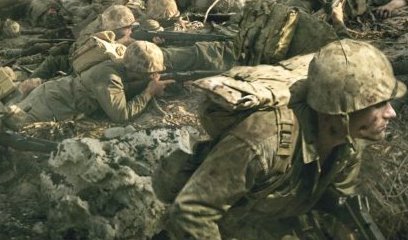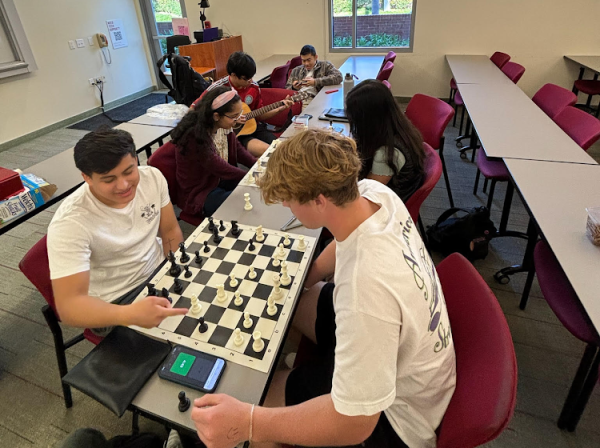Soldiers’ perseverance explored as series begins wrapping up
Although containing one of the best scenes of the series, part six of “The Pacific” feels like the beginning of the end.

HBO’s miniseries “The Pacific” follows the story of real-life Marines who fought in the U.S. Pacific campaign against the Japanese in WWII. It was produced by Steven Spielberg and Tom Hanks.
April 22, 2010
With an intense look at the gruesome realities of battle, this week’s sixth installment of “The Pacific” fills the screen with an intensely filmed 10-minute battle scene between the U.S. Marines and the Japanese soldiers as they battle for the crucial airfield on Peleliu. The battle scenes spend the majority of their time following Eugene Sledge in his role as a mortar man. The mortar men, as explained by one of the soldiers, follow a slight ways behind the main front of the battle in order to be able to set up and fire from a distance.
The coverage of the episode switches between Sledge and Leckie, with the latter receiving a concussion from an explosion and being evacuated from Peleliu. Unfortunately, the concussion removes Leckie’s role as a main character in the miniseries until the finale of the series. This brings a sad shift to “The Pacific.” One of the critiques on the series has been that it doesn’t compare well to HBO’s 2002 sister series “Band of Brothers” due to its lack of character depth. However, despite this critique, the viewer was given an in-depth look at Leckie’s character and it is unfortunate that the directors felt it necessary to move away from Leckie and towards Sledge’s character, especially given the pre-established connection with Leckie and his thoughts.
In one of the best scene’s of the miniseries so far, PFC Sledge looks at a wounded man blindly counting imaginary enemy soldiers and remarks to his commanding officer, “that could have been me.” His commanding officer replies to him saying that “history is full of wars, fought for a hundred reasons. But this war, our war, well I wanna believe … I have to believe that when we step across that airfield, every man that’s wounded, every man I lose, that it’s all worthwhile because our cause is just.”
The scene lets the viewer get a sense of what exactly it is that the soldiers told themselves in order to continue on fighting through the brutal war. In one sense, it had to make sense in their head in order for them to continue persevering through such colossal difficulty.
This sixth part had the feel of a baseball runner rounding third base and heading for home. Although the action, score and brilliant cinematography in no ways lessen in quality, the series is beginning to shift away from the momentum building first five parts and toward a wrapping up during the second half. This, coupled with the difficult reality presented within this particular sixth part makes “The Pacific” continue on as one of the best miniseries on television.






